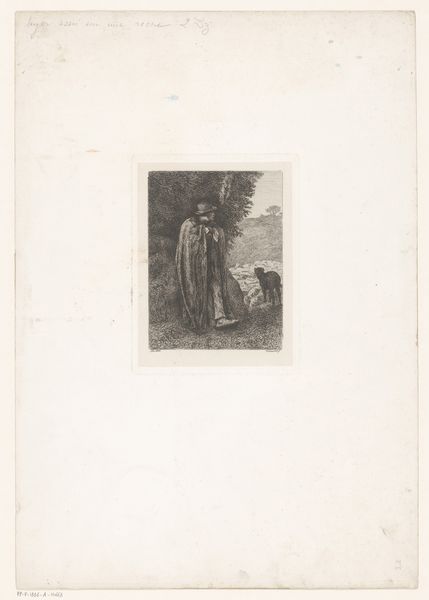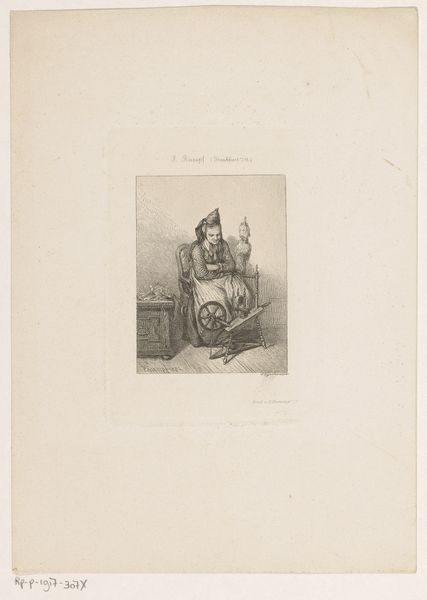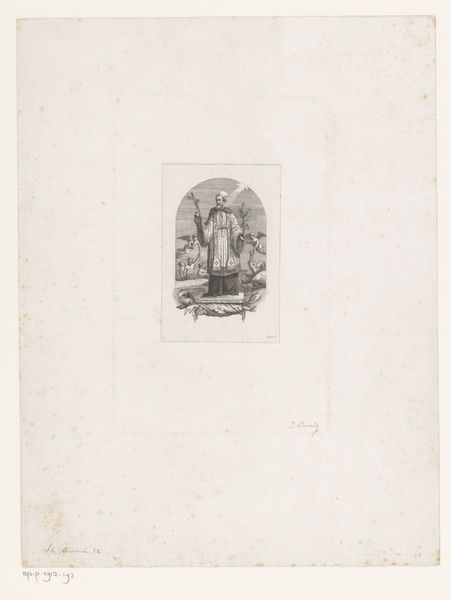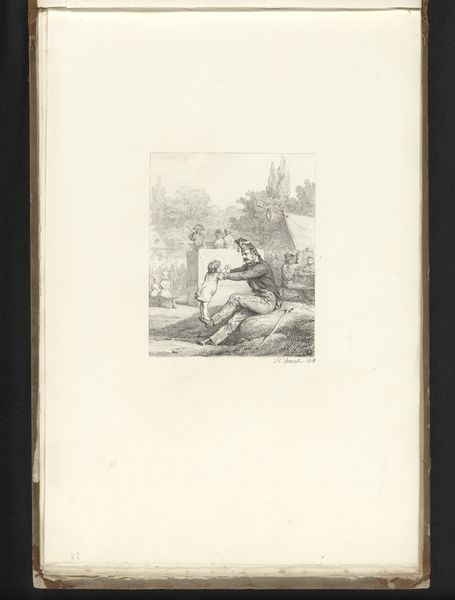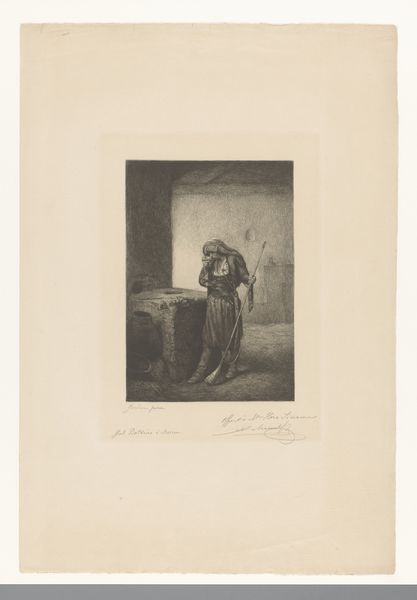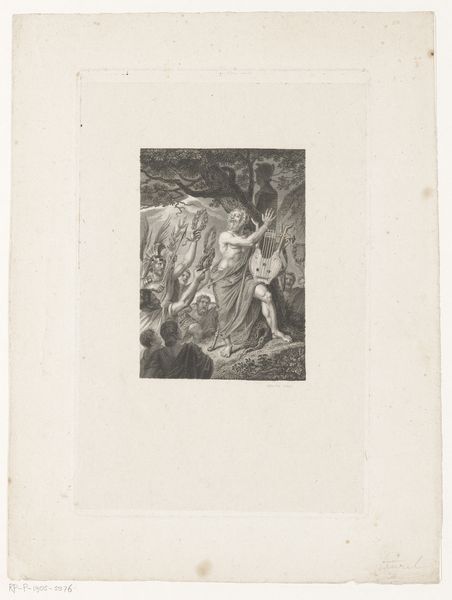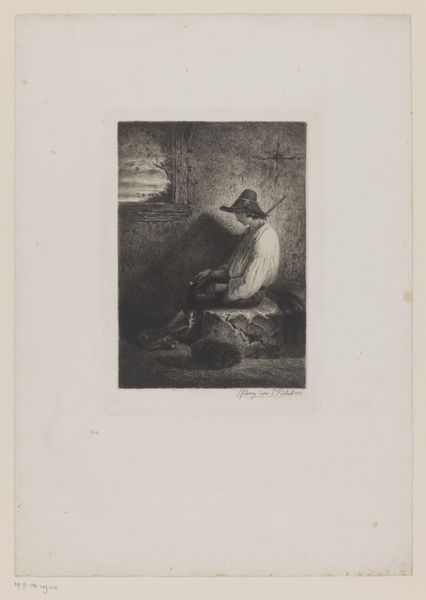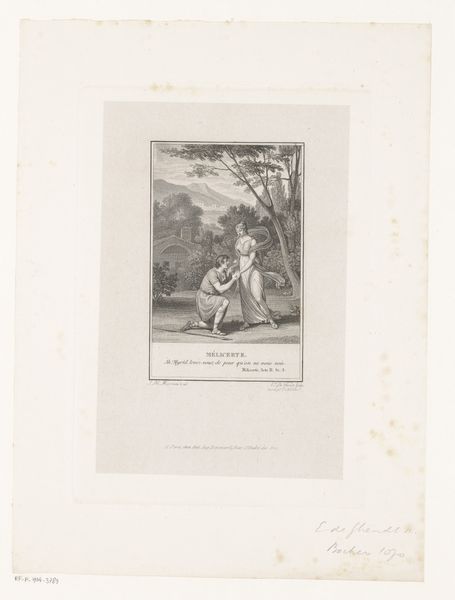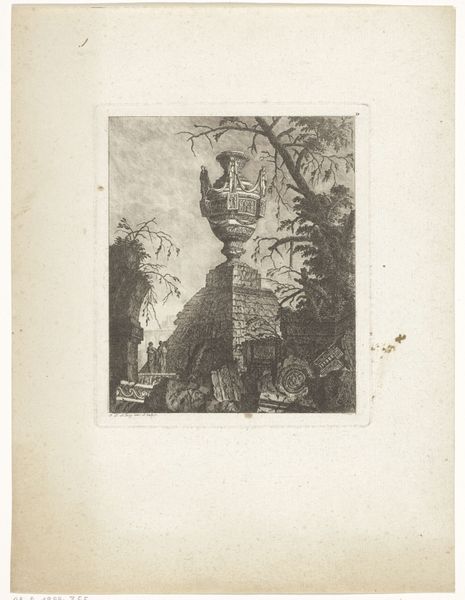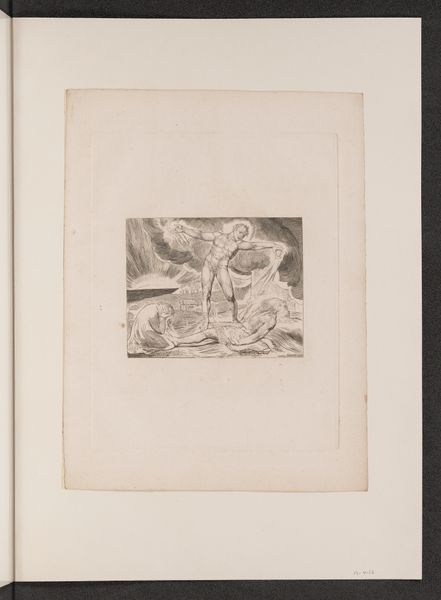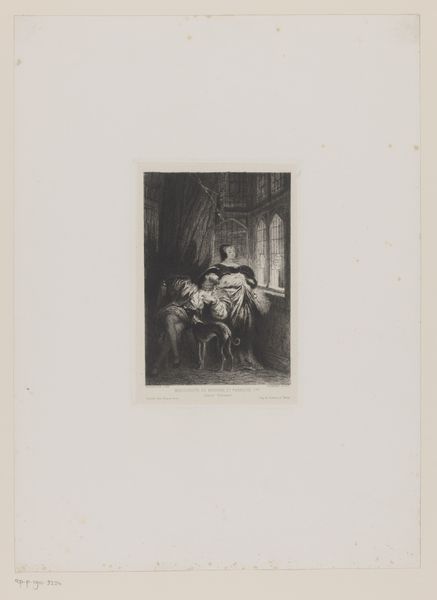
print, engraving
#
aged paper
# print
#
old engraving style
#
landscape
#
figuration
#
romanticism
#
line
#
history-painting
#
engraving
Dimensions: height 419 mm, width 302 mm
Copyright: Rijks Museum: Open Domain
Curator: We are looking at "Jonge geitenhoeder bij een beek" or "Young Goat Herder by a Brook" by Louis Boulanger, created in 1843. The piece, an engraving, resides here at the Rijksmuseum. Editor: It's striking, isn't it? The high contrast creates an almost theatrical mood, casting the herder as a sort of melancholic hero against the wild landscape. Curator: Indeed. Observe how the artist's use of line emphasizes the herder's posture—the curve of his back mirroring the bending tree. This serves to unite the human figure with nature's elements. Editor: And yet, it evokes some troubling tropes common to that period, reinforcing ideas about humanity's connection to an often-romanticized rural existence. What does it mean to idealize a life of labor while turning a blind eye to real issues of poverty, dispossession, or maybe even exploitation? Curator: From a purely aesthetic perspective, the composition effectively juxtaposes light and shadow. Notice how the lightest parts of the print accentuate the figure's arm raised towards the sky, while darkness dominates the background, which may also point to an allegorical or even spiritual reaching out for guidance. Editor: Yes, perhaps we can understand it not simply as pastoral idyll, but as indicative of contemporary social themes: class, inequality, gendered labor... Let's examine these images not only as reflections of a historical time, but as potent commentary, often unwitting, on their social matrix. Curator: I would also emphasize Boulanger’s technical skill, creating tonal variations with such a spare medium as the engraved line. A true command of form. Editor: Absolutely, technical skill acknowledged. But as we consider works such as "Young Goat Herder," let’s also question which stories are celebrated, which are concealed, and whose voices remain unheard within our institutional spaces. Curator: An important provocation. In focusing so diligently on composition, one risks missing how its components may be laden with symbolism rooted in societal dynamics. Editor: Exactly. Only through this critical engagement can we start to reimagine our narratives.
Comments
No comments
Be the first to comment and join the conversation on the ultimate creative platform.
